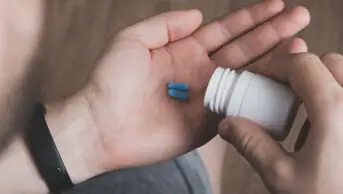The National Institute for Health and Care Excellence states that “medicines-related patient safety incidents are more likely when medicines reconciliation (MR) happens more than 24 hours after a person is admitted to an acute setting”[1]. The earlier that MR is completed within the inpatient stay — including stopping incorrect medication or doses being prescribed for the duration of their stay — the safer it is for patients, as it presents an opportunity to rectify discrepancies and clinical issues. Some approved medications are more high-risk (e.g. methotrexate, azathioprine) and complex (e.g. warfarin, lithium); patients themselves are becoming increasingly complex, having multiple comorbidities that often require many medicines to treat them.
These complex patients increase demand for specialist input from pharmacists throughout an inpatient stay. With limited resources, it is imperative that pharmacists target interventions for patients deemed highest priority, based on their clinical need. The pharmacy team needs to be directed to where demand is greatest, so there needs to be a way to identify these patients quickly and safely. Digital technology represents a solution; however, finding the right system to maximise productivity and efficiency is a challenge. The system needs to be safe, user-friendly, and ensure that patients are highlighted to the right person (utilising skill set) at the right time of their stay. As the pharmacist role has changed and has become more advanced, and continues to develop as outlined in the NHS Long Term Plan, a prioritisation system was deemed most beneficial: this can identify patients with certain conditions, or patients that need medications prescribing or reviewing[2].
The medicines system lead at Queen Elizabeth Hospital Gateshead built a real-time web dashboard, linked to the electronic prescribing and medicines administration (ePMA) system, with the aim of identifying pharmacy workload. Any updates or notes made on the prescribing system would be updated on to the dashboard immediately. Notes remain on the ePMA system, so these reappear on the dashboard if a patient gets readmitted.
The first ‘draft’ ward dashboard came into full effect in January 2019, and Plan, Do, Study, Act (PDSA) cycles were carried out by the pharmacy department during weekly clinical meetings, to amend based on clinical needs. Features of the dashboard now include medicines reconciliation; dosette box information; clinical chart check; anticoagulation information; high-risk/critical medication; discharge information; number of unverified items; quick view (to view the inpatient drug chart); allergy status; recent medication issues from dispensary; time since admission; patient’s own drugs notes; and action for pharmacist. All these notes and features continue to be pulled from the ePMA system in real time.
Since its introduction, this dashboard has helped utilise the pharmacy team, ensuring the patients are seen based on clinical need rather than time. It has allowed the team to prioritise workload and ensure optimal and cost-effective working, including at weekends. Improvement in key performance indicators, including MR, inpatient verification and pharmacist prescribing, have also been observed. After the initial roll-out of the dashboard, time taken from admission to medicines reconciliation reduced by 18.3% on weekdays, and 14.7% across the seven-day period. Prior to the dashboard, 60–70% of patients admitted on a weekday had MR completed within 24 hours; after roll-out, this figure is consistently above 80% and, in most months, 90% of patients have MR completed within 24 hours.
Verification rates increased after the unverified medication feature was added. Around 40% of items were verified prior to the addition of this feature, versus 60% of inpatient medications being verified after roll-out. Being able to target patients with several unverified medications ensures patients are seen for safety quickly, and allows the dispensary to receive verified orders. Pharmacy technicians can check verified medications in the dispensary, rather than this final check being made by a pharmacist.
The ‘quick view’ feature on the dashboard was added in January 2020 and allows pharmacy teams to quickly look at the medication patients had been prescribed on their ward. It also highlights patients with no medications yet prescribed; 12% of all prescriptions written for inpatients are now done so by pharmacist prescribers, versus 7% prior to dashboard rollout.
The dashboard has allowed all members of the pharmacy team to be able to identify patients on high-risk medications at the point of admission. Safety checks can be done remotely, and work can be prioritised to ensure that patients are seen based on clinical need. The dashboard has become an essential tool to ensure workload is prioritised effectively. As the service continues to change, the dashboard can be adapted to incorporate further information to aid assessment of patients, and where necessary to aid remote prioritisation and screening. It has been and continues to be invaluable to both pharmacists and pharmacy technicians who work on the wards providing a clinical service.
Sarah Bain, divisional lead pharmacist — medicine, Queen Elizabeth Hospital Gateshead; Sarah Browbank, divisional lead pharmacist — urgent care, Queen Elizabeth Hospital Gateshead.
Acknowledgements
SB and SB would like to thank Dan Pugh, medicines systems lead, for building and improving the system and all members of the ward pharmacy team working at Queen Elizabeth Hospital.
- 1National Institute for Health and Care Excellence. Quality statement 4: Medicines reconciliation in acute settings. National Institute for Health and Care Excellence. 2016.https://www.nice.org.uk/guidance/qs120/chapter/quality-statement-4-medicines-reconciliation-in-acute-settings (accessed 29 Mar 2021).
- 2NHS England. NHS Long Term Plan. NHS England. 2019.https://www.longtermplan.nhs.uk/ (accessed 29 Mar 2021).


